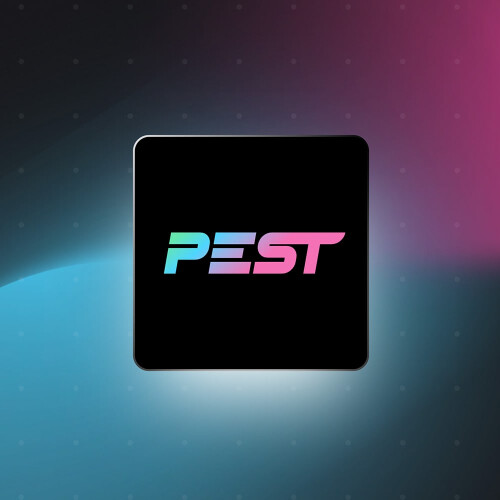When it comes to quality and efficiency in web development, testing plays a crucial role. In an ecosystem that constantly evolves, tools that not only offer functionality but also user-friendliness and performance step into the spotlight. Today, we shed light on one of these tools, which is causing a stir in the Laravel community: Pest. We immerse ourselves in the world of modern testing and discover what makes Pest a special tool that should not be missing in every developer's digital toolbox.
What is Pest and why is it different?
Pest is an elegant testing framework for PHP, specifically for Laravel, reminiscent of Ruby's Rspec and Jest. It stands out with a multitude of features that not only make it powerful, but also pleasant to use. Here are some highlights that make Pest special:
Architectural Testing
Architectural testing, also known as "architectural testing," is a form of testing that focuses not on the functionality of individual components or the system's behavior but on the code's structure itself. This aspect of testing is crucial because well-designed architecture affects the maintainability, scalability, and ultimately overall software quality. Pest supports developers in not only implementing best practices in software architecture but also consistently checking them.
With Pest, code is checked for consistency with the planned design, deviations from given architecture patterns are identified, and the result is neatly structured code that is easier to manage in the long run. This is especially important in large and constantly evolving codebases, where without regular checks, the architecture can become a tangled web of dependencies. Pest provides tools that ensure every line of code respects architectural principles, leading to a robust and maintainable application.
Snapshot Testing
Snapshot testing is a method in which the state of an application or system is "photographed" at a particular time and stored for later comparison. This is especially useful in the development of UI components or applications where visual consistency is critical. However, in other areas as well, this form of testing can offer enormous added value.
Pest significantly simplifies the snapshot testing process. Developers can create and save snapshots of their applications with a few commands. When changes are made, they can run their tests and use these snapshots as a reference to ensure that the changes did not have unintended effects. With each test run, Pest can automatically detect if there is a deviation from the stored snapshot and notify developers accordingly. The result is a testing process that is not only more efficient but also more error-tolerant. With the introduction of snapshot tests in Pest, developers can get a precise, automated overview of their applications' "health status" that goes far beyond traditional testing methods.
By using these two advanced testing methods, Pest positions itself as a framework that greatly enriches the development of PHP applications – especially in the Laravel environment – and significantly elevates the quality level. Pest represents a modern approach to software testing, supporting agile development and fostering delivery of high-quality code.
First-class Developer Experience (DX) with meaningful Error Messages & excellent Documentation
Clear communication is key – and this also applies to error messages. Pest shines with meaningful and understandable error messages that make debugging a breeze.
In addition, a well-prepared and easily understandable documentation is the foundation for the effective use of any tool. Pest impresses with first-class documentation that meets both beginners and professionals' needs.
Performance Analysis with --profile
Monitoring and optimizing application performance is one of the core tasks in software development. Pest supports developers in this with an integrated performance analysis feature, activated by the --profile command. This feature allows detailed insights into the execution time of individual tests. This makes it easy to identify bottlenecks and inefficient code passages, enabling targeted optimization.
This kind of feedback is invaluable because it not only offers snapshots of performance but also a continuous monitoring option during the development phase. This way, performance problems can be identified and fixed before they lead to larger issues in the production system. The --profile option ensures that performance is not viewed retrospectively but as an integral part of the development process.
Integrated --coverage Reports
The --coverage command in Pest is another key feature that supports quality assurance in the development process. Code coverage, i.e., the code covered by tests, provides information about the proportion of code that is tested by automated tests. High test coverage is often an indicator of a low error rate, thus increasing the reliability of the software.
With Pest, creating coverage reports becomes child's play. Without additional tools or complex configurations, Pest provides meaningful reports that show which areas of the code have been tested and where there may be testing gaps. This transparency is crucial for continually improving test strategies and ensuring critical code paths are covered.
Native --parallel Support
In complex projects with hundreds or even thousands of tests, the test duration can quickly become a bottleneck in the development cycle. Here's where Pest's native --parallel function comes into play. It allows multiple tests to be run simultaneously, significantly reducing the total duration of test runs (up to 60%). This parallelization means that teams receive feedback faster on their changes and can, therefore, develop more agilely.
Especially in continuous integration (CI) environments, the ability to run tests in parallel is crucial. It enables fast builds and encourages a culture of continuous improvement. Pest's native support for parallel test execution is, therefore, a genuine advantage for development productivity.
Interactive --watch Mode
The --watch mode in Pest is a feature that significantly improves the developers' workflow. It monitors the code base for changes and automatically runs corresponding tests as soon as a change is detected. This immediate feedback is extremely valuable for developers as it allows them to identify and fix errors immediately.
This kind of interactive testing not only promotes test-driven development (TDD) but also helps keep track of the direct impact of code changes. The result is rapid iteration and continuous improvement of the codebase as feedback cycles are shortened. The --watch mode is thus an essential tool for developers seeking efficiency and quality in their coding workflow.
Datasets for Repeatable Tests with Different Data
Using datasets in the testing process is a powerful method to ensure that your application works as expected under different conditions. Pest allows developers to run tests with different datasets multiple times. This is especially useful for testing the robustness of functions that must work with various input values. With datasets, for example, you can check whether a function works correctly with different user inputs, various file formats, or in different languages. Automation of this process reduces the likelihood of human errors and enables a more comprehensive and efficient code review.
--drift for Fast Migration of the PHPUnit Test Suite
When it comes to PHP testing, PHPUnit has been the undisputed standard for years. But with the advent of Pest, developers now have access to a tool that takes the familiar and robust foundation of PHPUnit and refines it with a fresh, modern interface. Pest acts as a wrapper around PHPUnit, meaning it uses PHPUnit's stable base and enhances it with improved syntax and additional helpful functions.
Drop-in Extension for Existing PHPUnit Tests
One of Pest's strengths is its ability to serve as a kind of "drop-in" solution for existing PHPUnit test suites. This allows teams that have already written an extensive amount of PHPUnit tests to benefit from Pest's advantages without losing existing code or having to do extensive rewrites. Thanks to the --drift command, a PHPUnit suite can be quickly and efficiently migrated to Pest, making the transition more like an upgrade than a complete overhaul.
Maintaining Compatibility
Pest respects and supports the standards set by PHPUnit. This means that all PHPUnit-specific configurations and extensions will continue to work. This ensures that teams adopting Pest can continue to access PHPUnit's extensive documentation and community while enjoying Pest's new features and improvements.
Complementary Features without Compromises
Despite the additional functionalities and ergonomic design, Pest remains true to the heart of PHPUnit, meaning there are no compromises in terms of performance or reliability. It refines the testing process without disturbing PHPUnit's underlying mechanisms, which make it so reliable.
Using Pest, developers get the best of both worlds: The stability and reliability of PHPUnit combined with the improved DX (Developer Experience) provided by Pest. This duo allows developers to work at increased speed and efficiency while relying on their test framework's robustness and reliability. Pest thus represents a natural evolution in PHP testing, enabling developers to take their work to the next level.
Varied Community Plugins
An active and committed community is an essential part of any open source project. Pest benefits from such a community, which has developed a variety of plugins that extend the framework's functionality. These plugins range from additional assertions and helper functions to integrations with other tools and services. The diversity and quality of these community contributions ensure that Pest remains flexible and up-to-date and can be easily adapted to the specific requirements of any project.
Mocking with Mockery
Mockery is a popular and flexible PHP mocking library that allows simulating objects and "pretending" specific behaviors in tests. Pest integrates seamlessly with Mockery, allowing developers to quickly and easily create mock objects for their tests. This is crucial for running tests in isolation and independent of external dependencies like databases, APIs, or other services. Using Mockery with Pest, developers can create precise and controllable test environments essential for effective and efficient testing.
Additional features like --todos, --retry
Pest also offers a range of additional features that simplify and improve the testing workflow. With --todos, developers can mark tests that are not yet finished or require further revision. This allows a structured approach where one can focus on completing the most important tests and work through these later. The --retry function is particularly helpful in dealing with flaky tests that sometimes fail due to timing issues or external uncertainties. Instead of manually rerunning such tests, Pest can automatically retry them, saving time and improving the reliability of test results.
The Importance of Testing Frameworks in Modern Web Development
In a time when software product agility and reliability can determine a business's success, a robust testing framework is not only desirable but necessary. Testing frameworks like Pest offer a solid foundation to ensure applications meet requirements and remain performant and reliable even under pressure. Pest represents a modern approach that enables development teams to work efficiently and effectively.
With a focus on usability and productivity, Pest targets developers who value a clear and maintainable test environment. It is the interface between technical excellence and user-centered design – a combination that can make the difference in today's digital landscape.
Why Pest Matters to Us
As a digital agency dedicated to creating top-notch web applications, we know that choosing the right testing framework has a significant impact on the quality of our work. Pest allows us to ensure this quality while remaining efficient and agile.
By implementing Pest into our development processes, we don't just strengthen our service offering, but also our customers' confidence in our expertise. This shows in every line of code and in every application delivered.
Conclusion
Testing is the backbone of high-quality software development. With an innovative approach like Pest's, development teams benefit from a tool offering both performance and user-friendliness. Pest's numerous features, such as snapshot testing, colored console output, and intuitive error messages, reflect the dynamism and innovation in the field of software testing.


